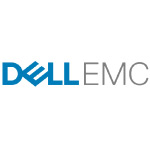Adopting a tailored strategy for your organization
Each company has to create its own Cloud strategy. Whether it’s with the objective of setting up their own Private Cloud or accelerating their migration towards the Public Cloud. In any case, we have seen amongst our clientele a very wide spectrum of strategies targeting different business needs. This is why we often discuss adopting a “Hybrid” approach, using a single and integrated management approach.
In the era of the Cloud, it’s not uncommon to meet IT colleagues that question the viability of their role in the future. We believe that organizations have never needed more guidance with respect to the available choices, in addition to where to invest next. Companies that have begun their migration towards the Cloud often count the most proactive team members, educating and preparing themselves. We’re redefining, somewhat, the role of IT acting more as consultants, helping to navigate the variety of internal or external service options.
An Example of the Steps to Develop a Cloud Management Plan
A collective exercise to define a company’s Cloud strategy should include pinpointing the context, the needs and the company’s vision. It is primordial that the company’s Cloud strategy’s key elements are inline with the company’s philosophy, priorities and the implicated members. For example: the comprehension of business requirements, transformation objectives, company methods and capacities, targeted timelines, constraints and risks should be taken into consideration. This common understanding then enables each one to better interpret their role and their potential contribution.
We can then establish the primary evolution strategy that helps shape the guiding principles for the intended transformation. These will dictate the classifying or categorizing approach that apply for each of the company’s services or applications. Evaluating whether the services will be kept internally or moved to the Public Cloud is probably the most complex exercise undertaken by the teams. Often, we answer these questions by creating a matrix in accordance with established criterias.
Some of the considered criterias or decisional factors are technical in nature, while others relate to the company operations or company culture. Here are a few examples that guide the strategy choice behind where a future service should be place:
• The generated value for the organization – Establishing whether a mastery of its tools, technology or processes is advantageous to the company.
• Inter-system dependence – Understanding whether applications can work autonomously or whether they are dependent on links and connections to other systems, or company databases.
• The knowledge and internal expertise – Based on past experience, the results when faced with new initiatives, technology proficiency, the importance or unimportance of mastering knowledge internally.
• The amount of change and the variation of needs – Many companies have difficulty foreseeing the trends of the next two years in their own industry. It is therefore difficult to commit to plans to invest in technology and a long-term vision.
• Sought after functionality – More and more, specific functionalities (such as: mobility, artificial intelligence, connected objects) drive the choices made by companies, not only with respect to going towards the public Cloud but also with respect to the choosing providers that have exclusivity of certain functionalities.
• The level of service required – Which can be interpreted as needs and performance requirements, localization, network latency, security, service availability, growth capacity, etc.
• Software providers and applications– Direction can also be imposed based on the model preferred by the software provider (SaaS or Trad.)
• The company’s financial approach related to IT – If the company has the practice to capitalize on investments when updating technology or whether it prefers to transform its costs and put the expense under operational costs.
Many other factors and criteria come into play to enable load categorization as well as a custom company strategy.
Introducing VMware Cloud Platform and Dell VxRAIL for the acceleration of your Cloud strategy
A major factor which assists companies in their migration towards the Hybrid Cloud is the evolution of their tools. This is the case for the VMware Cloud platform. If we previously considered vSphere as a hypervisor, VMware now presents itself as a much more evolved solution with VMware Cloud Foundation. It therefore proposes a complete virtualization approach for data centers, which include vSphere (processing), vSan (storage), NSX (network), vRealize Ops (management), vRealize Automation (automation, service cataloguing), vRealize Business (cost management, refacturing services) and brings a much larger capacity. By combining that type of advanced Cloud software to Dell VxRAIL ‘s Hyperconverged infrastructure solutions, we can drastically accellerate your journey to set-up a Cloud foundation.
In our recent technology mandates, we have touched private Cloud roll-out projects, as well as launching multi-Cloud platforms enabling the simultaneous management of services placed with multiple public providers. It is interesting to see how Vmware Cloud platforms (VMC), which are used in the operations of about 80% of enterprise data centers, were adopted as a standard by the industry giants such as Amazon (AWS), Microsoft Azure, Google and IBM Cloud. It is also interesting to see that VMware continues to listen to its clients who are looking to modernize and to rewrite their applications in modern languages and eventually base them in native Cloud services. VMware has announced, at its large VMworld conference in San Francisco in August 2019, the integration of a range of functionalities to its platform enabling the container environment management (ex. Kubernetes).
We consider the VMware platform as an important accelerator for your strategy. This enables VMC or AWS, or other Cloud solutions, to act as a bridge in order to migrate your existing VMs towards the public Cloud, which benefits you by you being able to take advantage of the cornucopia of value-added native Cloud services. This positions your company to be able to support all environment types such as traditional, virtualized, containers and next-gen. If your company invests in VMware software annually, this can be seen as an advantage and driving argument with respect to protecting your investment.
The Role that Public Cloud Service Providers Take On
Public Cloud providers can be seen as a service commodity, for others they are perceived as strategic innovation enablers. Your own strategy and approach towards the Cloud will impact this perceived value. Here’s an example of a recently completed client project, which involved our specialists, in addition to the VMware team and a global Cloud provider. This client had to invest large sums to replace their data center and backup infrastructure. They were confronted with issues such as 1. Their data center was almost at capacity, 2. The need to establish geographically distributed and redundant datacenters 3. The blatant lack of personnel to deploy and manage their IT environment, 4. An explosive increase and much fluctuation in their needs, 5. A focus on application modernization and business intelligence.
By closely working together, we were able to propose an architecture that could address all the company objectives in addition to saving thousands of dollars every month. The proposed solution took advantage of the robustness and versatility of the VMware Cloud platform, with which the staff could easily become proficient. It also enabled the company to benefit from new possibilities of next-gen services (ex: on-demand capacity, high availability and automatic redundancy, and BI), provided by the established Cloud provider.
Where to Start?
If you are working on a Cloud initiative, and you have defined your objectives; everything now relies on your strategy execution. It’s quite likely that you have some team members experienced in migration and the planning of these types of project. Regardless, should you need assistance, our team will be happy to help throughout the process, either as consultants or validators. You can take advantage of the experience acquired by our team of specialists.
Meanwhile, we invite you to join us at one of our upcoming Innovation Forum events (for executives) and our TechnoLab Sessions (for IT Managers, and Solution Architects), which can also help in planning your own process.
Looking forward to seeing you. See our calendar for our upcoming events.
![]()




